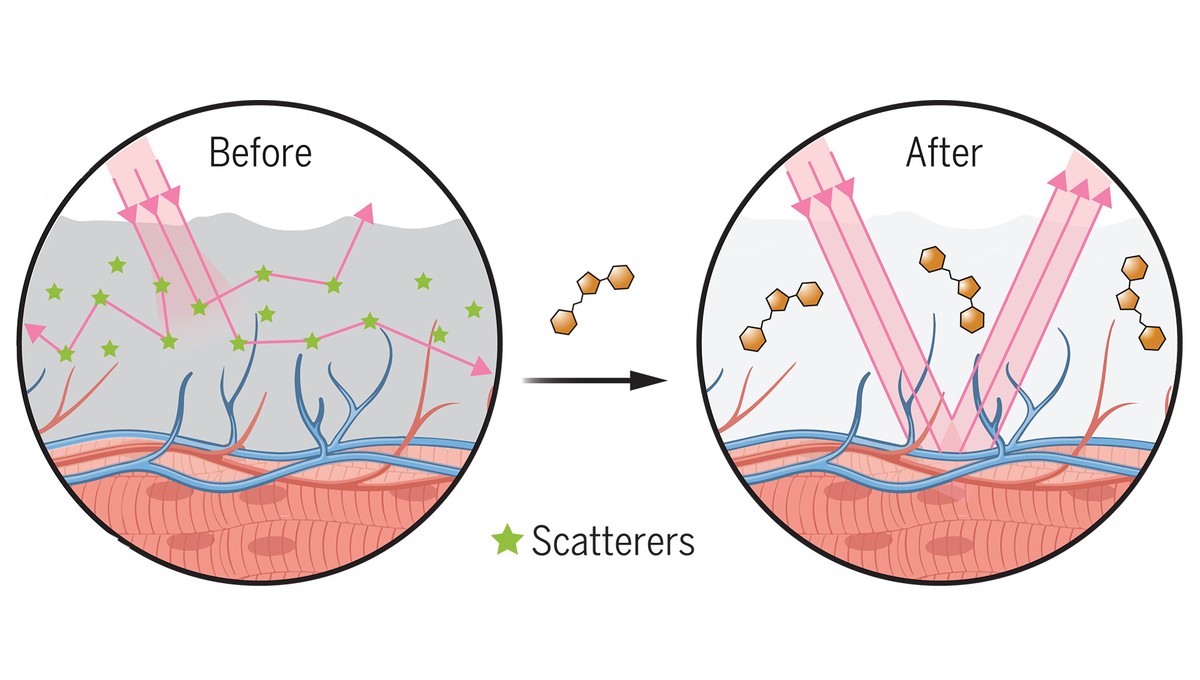Scientists at Stanford University have found a way to make the skin of living mice turn clear. The trick is actually pretty simple – rubbing a common yellow food dye on the mouse’s skin. The discovery could one day help doctors see inside human bodies without cutting them open.
It’s often helpful for doctors to be able to see inside the human body. That’s why doctors use methods like X-rays or ultrasound to see inside the body.
Now scientists at Stanford University have created a liquid that allows them to see through the skin of a mouse. The liquid is made with tartrazine – a yellow-orange coloring that is often used in foods. In the US, it’s known as FD&C Yellow 5. It’s used in many products, including Doritos.

(Source: University of Texas at Dallas .)
The scientists mixed tartrazine with water to make something like a lotion. When they tested this mixture on very thin slices of chicken, the chicken began to turn clear.
Next, the researchers decided to try the coloring on the skin of living mice. First they shaved the mice, to get the hair out of the way. Then, they rubbed the liquid on the skin of the mice.
In just a few minutes, the skin of the mice became see-through. Using the liquid, the scientists were able to see inside a mouse’s brain. When the mixture was rubbed on the skin of a mouse’s belly, the organs inside, like the liver and intestines, could be seen clearly. When the liquid was washed off, the skin returned to normal.

(Source: Screenshot, Zihao Ou et al., Science.)
To understand how the new discovery works, it’s helpful to think about how light travels through different materials. Light travels in a straight line, unless it runs into something. Then, it usually bends or bounces. Glass is easy to see through because light only takes a slight bend when it goes through the glass.
But skin isn’t like glass. Skin is made of lots of different things, like water, fat, and protein. Each different material in the skin sends light bending and bouncing in different ways, scattering the light. This scattering of light is what makes it hard to see through skin.

(Source: Adapted from Zihao Ou et al., Science.)
The tartrazine changes the way light bends in the skin. It does this mainly by making the watery parts of the skin more like the fatty and protein areas. This means that light hitting the skin mostly bends the same way, making the skin see-through.
Guosong Hong, one of the leaders of the research, says that if something similar could be made to work on humans, it could lead to exciting medical advances. For example, it could allow doctors to look for problems inside the body without needing to do surgery. The method could also make it easier to find veins for blood tests.
The scientists say more work needs to be done before a similar method can be used on humans. The dye only works on thin skin, and human skin is much thicker than the skin of mice.
Did You Know…?
The experiment was supported by the US National Science Foundation (NSF). Tartrazine hasn’t been tested for safety on human skin. But the NSF has published instructions for people who want to try the scientists’ experiment which turned chicken clear. You can find the instructions here: NSF experiment instructions
